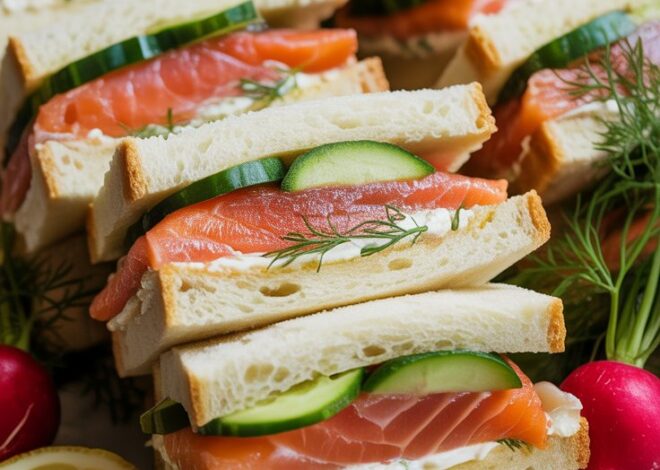
How to Make Baked Boudin Balls: The Best Cajun Appetizer Made Easy 2025
The cuisine of the American South is renowned for its bold flavors, comforting textures, and a deep connection to cultural heritage. Among these treasured dishes, boudin balls stand as a quintessential Cajun appetizer that captures the very essence of Louisiana cooking. Traditionally deep-fried, boudin balls are savory, satisfying snacks made from spiced sausage and rice, formed into balls, coated in breadcrumbs, and fried to crispy perfection.
However, in today’s health-conscious world, many food lovers seek ways to enjoy their favorite indulgent dishes without compromising on wellness. That’s where baked boudin balls come into play—offering the same spicy, smoky, and savory bite, but with significantly less oil and fat.
In this comprehensive guide, we’ll explore the origins of boudin balls, their cultural significance, health benefits of baking over frying, a detailed step-by-step recipe, tips for achieving the perfect texture, serving suggestions, nutritional information, and answers to the most frequently asked questions about this Southern delicacy.
What Are Boudin Balls?
Boudin balls are a creative culinary adaptation of boudin sausage, a classic Cajun staple from Louisiana. Boudin itself is a sausage made primarily of cooked pork, liver, rice, onions, green peppers, and a blend of spices stuffed into a casing. To create boudin balls, the sausage mixture is removed from its casing, shaped into balls, breaded, and traditionally deep-fried until golden brown.
This snack is widely served at Southern gatherings, festivals, family dinners, and tailgate parties, appreciated not only for its rich flavor but also for its connection to regional identity and tradition.
The Healthier Alternative: Why Bake Instead of Fry?
While the authentic boudin ball experience typically involves deep frying, baking them provides multiple benefits:
1. Lower Fat Content
Baking significantly reduces the amount of fat and calories in each serving. Without the absorption of oil from deep frying, baked boudin balls offer a lighter, healthier option without sacrificing flavor.
2. Less Mess and Easier Cleanup
Deep frying can be messy and time-consuming, with hot oil splattering and a greasy aftermath. Baking simplifies the cooking process—just a lined baking sheet and a hot oven.
3. Heart-Healthier Option
Reducing the intake of fried foods can improve heart health, lower cholesterol, and support overall well-being. Baked versions retain the satisfying crunch with the help of panko breadcrumbs and a light spray of oil.
4. Consistent Results
Baking ensures even cooking and browning without the risk of burning the exterior while leaving the inside cold or undercooked—a common challenge with frying.
Ingredients for Baked Boudin Balls
Creating perfect baked boudin balls begins with the right ingredients:
For the Boudin Balls
- 1 lb boudin sausage (casings removed)
- 1 cup cooked rice (optional, for binding if needed)
- 1/4 cup chopped green onions
- 2 tablespoons chopped fresh parsley
- 1/2 teaspoon garlic powder
- 1/2 teaspoon Cajun seasoning (adjust to taste)
- 2 eggs, beaten
- 1 1/2 cups panko breadcrumbs, divided
- Nonstick cooking spray or olive oil spray
Optional Dipping Sauce
- 1/2 cup mayonnaise
- 2 tablespoons Dijon mustard
- 1 tablespoon ketchup
- 1 teaspoon hot sauce
- 1/2 teaspoon paprika
- Salt and pepper, to taste
Step-by-Step Recipe for Baked Boudin Balls
Step 1: Prepare the Boudin Mixture
Remove the casings from the boudin sausage and place the filling in a large bowl. If the mixture is too loose to shape, mix in cooked rice until it firms up. Add the green onions, parsley, garlic powder, and Cajun seasoning. Use clean hands or a sturdy spoon to mix thoroughly until evenly combined.
Step 2: Shape the Balls
Take small portions of the mixture and roll them into golf ball-sized shapes. The key is to keep the balls tightly packed so they hold together during baking.
Step 3: Coat the Balls
Set up a breading station:
- Bowl 1: Beaten eggs
- Bowl 2: Panko breadcrumbs
Dip each ball into the egg mixture, then roll it in panko breadcrumbs until fully coated. This step is crucial for achieving a crisp exterior.
Step 4: Arrange and Bake
Preheat the oven to 400°F (200°C). Line a baking sheet with parchment paper and arrange the breaded boudin balls evenly spaced apart. Lightly spray them with cooking spray to encourage browning.
Bake for 20–25 minutes, flipping halfway through, until the balls are golden brown and crisp.
Step 5: Prepare the Dipping Sauce
While the balls are baking, whisk together the mayonnaise, Dijon mustard, ketchup, hot sauce, and paprika in a bowl. Season with salt and pepper to taste. Chill the sauce until ready to serve.
Step 6: Serve and Enjoy
Serve your baked boudin balls hot, accompanied by your dipping sauce of choice.
Expert Tips for Perfect Baked Boudin Balls
- Use Day-Old Rice: If you need extra binding, day-old rice is less sticky and helps the mixture hold better.
- Chill the Mixture: Refrigerating the mixture for 20–30 minutes before shaping can help firm it up.
- Double Coating: For an extra crispy finish, double coat by repeating the egg and panko steps.
- Air Fryer Method: For even crispier balls, use an air fryer at 375°F (190°C) for 10–12 minutes, flipping halfway.
- Flavor Variations: Experiment with adding smoked paprika, chopped jalapeños, or cheddar cheese for added flair.
Nutritional Profile of Baked Boudin Balls
Here is an approximate nutritional breakdown per ball (without sauce):
- Calories: 140
- Protein: 6g
- Fat: 8g
- Carbohydrates: 11g
- Fiber: 0.5g
- Sugar: 1g
- Sodium: 320mg
Baking significantly reduces fat content compared to deep frying, making this a more balanced indulgence.
Serving Suggestions
Baked boudin balls are incredibly versatile. Here’s how to enjoy them:
- Party Platter: Serve alongside other Southern favorites like hush puppies, deviled eggs, and mini cornbread muffins.
- Main Course: Pair with a fresh salad, pickled vegetables, or coleslaw.
- Game Day Snack: Offer with an array of sauces like ranch, remoulade, or a spicy aioli.
- Brunch Addition: Place alongside scrambled eggs and toast for a hearty Southern brunch.
Common Mistakes to Avoid
- Over-mixing: Can lead to a mushy texture.
- Skipping Oil Spray: A light spray is essential for that crispy, golden exterior.
- Uneven Sizes: Inconsistent sizing results in uneven cooking.
- Not Flipping: To ensure uniform browning, flipping the balls halfway is key.
FAQs About Baked Boudin Balls
What is the origin of boudin sausage?
Boudin sausage traces back to French-Acadian roots in Louisiana, evolving into a Cajun specialty that merges European techniques with Southern ingredients.
Can I freeze boudin balls before baking?
Yes, shape and bread them, then freeze on a tray until solid. Transfer to a freezer bag and bake directly from frozen, adding 5–7 extra minutes to the bake time.
What’s the best sausage to use?
Authentic boudin sausage is best, but you can substitute with a mixture of seasoned pork and rice if boudin is unavailable.
Are there vegetarian alternatives?
Yes! Use a combination of cooked lentils, rice, and vegetables, seasoned with Cajun spices, to create a vegetarian-friendly version.
What’s the shelf life of cooked boudin balls?
Store cooked balls in an airtight container in the refrigerator for up to 3 days. Reheat in an oven or air fryer to retain crispiness.
Creative Variations to Try
- Cheesy Boudin Balls: Add shredded pepper jack or cheddar cheese to the mix.
- Spicy Kick: Incorporate finely chopped jalapeños or a pinch of cayenne pepper.
- Herbaceous Twist: Mix in fresh thyme or oregano for an aromatic boost.
- Gluten-Free Option: Use gluten-free panko or crushed cornflakes as the coating.
- Mini Bites: Make smaller, bite-sized versions for appetizers or party trays.
Why Baked Boudin Balls Are the Perfect Modern Southern Dish
In today’s culinary world, people crave both tradition and health consciousness. Baked boudin balls meet this demand perfectly:
- Preserves Cultural Authenticity: Honors Cajun culinary traditions.
- Healthier Indulgence: Enjoy Southern flavors without the guilt.
- Easy for Home Cooks: Simple methods accessible to all skill levels.
- Adaptable Flavors: Endless room for personalization.
Conclusion
Baked boudin balls stand as a testament to how traditional dishes can evolve without losing their soul. With their bold Cajun flavors, crisp coating, and versatile serving options, they are more than just an appetizer—they’re a celebration of Southern heritage adapted for the modern table.
Whether you’re hosting a party, preparing game-day snacks, or simply craving something indulgent yet healthier, baked boudin balls are a dish worth mastering. By baking instead of frying, you get all the taste and texture you love with a fraction of the fat—making it a win for both your palate and your health.


